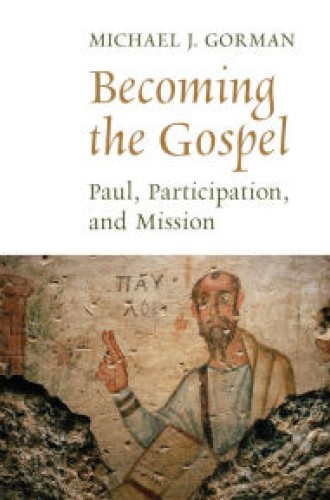Everyday theosis
In a study of mission in the Pauline letters, one might simply ask what kinds of things Paul calls believers to do. By cataloging and arranging those behaviors, one could then claim to have described Paul’s understanding of mission.
But Michael J. Gorman has something different to say. He explores mission as an expression of participation in the gospel, a theme that has sustained his career.
Theosis—Spirit-enabled transformative participation in the life and character of God revealed in the crucified and resurrected Messiah Jesus—is the starting point of mission and . . . its proper theological framework.





